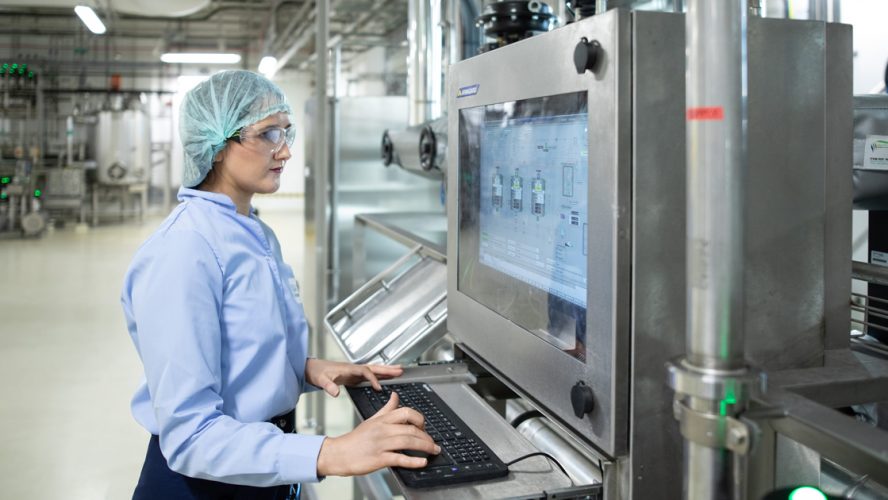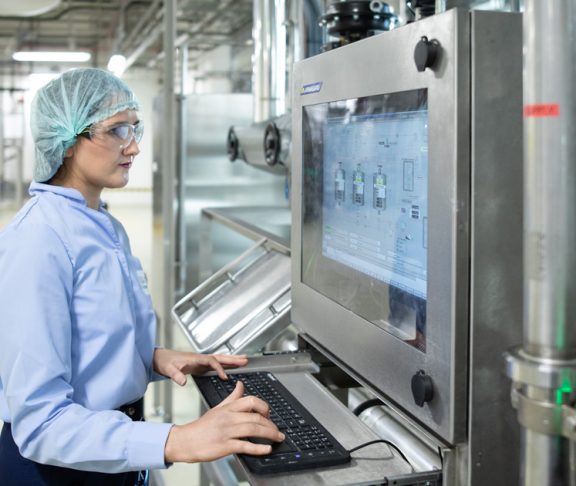
Three women in the food industry are helping drive innovation in nutritional science.
Lisa Henihan, a Product Development Specialist at Nestlé, nearly missed out all together on her opportunity to work in science and technology.
“I was originally at an all-girls’ school and transferred in my third year to a mixed school,” she explains. “I hadn’t done science before as I had chosen to do Home Economics and Art, but at the new school I had to do Science and got on really well with it. I have an analytical mindset and I’m a problem solver. With the help of a really good Science teacher I squashed three years of learning into one.”
Variety of experience
Lisa went on to study Food Science at the University of Limerick and worked in food, pharmaceuticals and medical device companies before achieving a MSc and PhD in Engineering and joining Nestlé.
Amie Woods, a Process Development Specialist, also found her STEM background gave her plenty of options after graduating with a BSc in Food Science and Technology.
“My career path to date has been diverse and varied within the food manufacturing industry, branching out into three areas. I have worked in regulatory affairs, which ensures your product is compliant with regulations, product development which involves designing a new product, and now process development, my current role where I deliver the product, essentially bringing it to life, your options are very broad.”
Fionnuala Ward, Quality and Continuous Improvement Manager, says her interest in the wider world led her to a Masters in Industrial Chemistry, a varied career and then to Nestlé.
“I was always fascinated by how the world works, and I quickly saw STEM provided many different opportunities in a variety of industries, from construction to medical device to infant nutrition,” she explains.
When it comes to STEM roles for women, it is best to expect the unexpected.
Variety of role
Even within the company, there are plenty of opportunities to maintain variety, Lisa says.
“The core part of my role is product development, but then you’ve got lots of other options, developing early innovation, creating new innovation and working on new methodology. You don’t come here and do one job. Our roles are very cross-functional, and that’s what keeps it interesting.”
Challenging stereotypes
Indeed, Fionnuala says, when it comes to STEM roles for women, it is best to expect the unexpected.
“The perception is that if you do science you will be in a laboratory. But I did my work experience in a laboratory and have never worked in one since. My first job I was in steel-toe capped shoes and a hard hat, then a medical device company in a clean room environment, while now, I have an office-based role working in infant nutrition.
“Science and engineering demonstrate a logical mind, an ability to problem solve and then apply those skills to any company or role. It is our job as females in those roles to educate the future generation about this.”
Inspiring the future
Lisa is doing exactly that, lecturing at the Limerick Institute of Technology in Food Validation and Regulations.
“There are lots of women coming up through the ranks in research,” she says. “Of course, it depends on the role, as men tend to work in engineering-based roles while women tend to work in science-based roles. But I do see change coming.”
Nestlé’s Development Centre and the Wyeth Nutritionals Ireland manufacturing plant are co-located in Askeaton, Co. Limerick. Wyeth Nutritional Ireland produces a range of premium milk powder products for infants, young children and mothers for export to world markets. The R&D centre, which employs over 45 research staff, focuses on scientific research to support innovations in the development of milk-based maternal and infant nutrition products.


